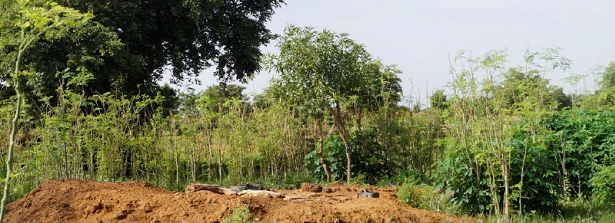Lunch Seminar: Agricultural intensification in the Sahel

Agroforestry is a low cost and effective practice to increase agricultural productivity and set the stage for further intensification. If used in combination with water harvesting, organic manure and micro-doses of good quality fertilizer yields in drylands can increase greatly. This was a key message of Chris Reij, Senior Fellow Global Restoration Initiative at the World Resources Institute, who argues that the Netherlands should leverage the impact of agroforestry in the Sahel by providing farmers with access to small quantities of good quality fertilizer.
Focusing in particular on Niger, Chris was invited to present on “Agricultural intensification in the Sahel: Reducing poverty and adapting to climate change” at a lunch seminar taking place on October 11, 2018, at the Netherlands Ministry of Foreign Affairs.
| Documents to download |
|
In his talk he focused on the potential of agroforestry to intensify agriculture in drylands by interplanting trees with farming crops. The benefits of this approach include improvement of soil fertility and soil organic matter, decrease in local temperature, preservation of soil moisture, prevention of wind and water erosion, besides delivering useful products such as firewood, fodder, and fruits or nuts. While simultaneously leading to a higher production per hectare. At a bigger scale (higher) tree density even influences rainfall patterns, captures CO2 and thereby contributes to adaptation and mitigation of climate change.
Positive effects
By revisiting the same villages over decades, Chris has seen the positive developments of agroforestry and water harvesting techniques. Farmers have regreened large areas of degraded soils in Niger and the PowerPoint of his presentation shows further examples of such positive effects. Satellite imagery for instance shows that areas of higher population density also have a higher density of trees as local populations embrace the positive impact of agroforestry. One remarkable story recounts the tale of Yacouba Sawadogo, a farmer known as “the man who stopped the desert” (documentary), who successfully created an almost 40-hectare forest on formerly barren and abandoned land. To do so, he used zaï pits which are traditional planting pits for soil, water and biomass retention. For his efforts Yacouba won the Right Livelihood Award in 2018 for demonstrating how farmers can regenerate their soil with innovative use of indigenous and local knowledge.
Chris emphasized that it was especially the most vulnerable farmers who had something to gain from an agroforestry approach. These farmers usually have the smallest plots and thereby a greater need to increase productivity of the land that is available to them. Land tenure is an important condition for such efforts to succeed, as according to Chris, experience shows that farmers will only invest in regeneration and tree planting if they have a right to use their land in the longer term. Problematic in this sense, he says, is therefore the land grab that is currently ongoing in the Sahel – where elites in the cities buy up land of poor farmers at below market price.
According to Chris there is no future for agriculture in Sahelian drylands without agroforestry. If approached correctly the positive benefits of these land management practices are manifold and can have effects far beyond the farm level. Greater availability of natural resources for instance can decrease farmer-herder conflict, while the potential for higher productivity provides perspective for farmers who no longer see the need to move away to other (often lower productivity) areas. In light of the current demographic projections for Niger and the Sahel this is especially important. As increasing production in these drylands will be a key factor in feeding these growing populations.
Reaching scale
But in light of what is needed a challenge for donors will be to reach scale. Dynamic bottom-up processes are needed, meaning that interventions will need a flexible approach to function as a catalyst for change. In his presentation Chris proposed a six step strategy to achieve this, by: 1) Identifying and analyzing re-greening successes in Drylands, 2) Working from the grassroots, 3) Creating enabling policies and legislation, 4) Developing a communication strategy, 5) Developing agroforestry value chains, and 6) Developing research to fill gaps in knowledge.
A first step for donors can be in starting a dialogue with the Sahelian governments about land rights, forestry law, availability and quality of fertilizers, and agroforestry in general. The time seems ripe as policymakers in the region seem receptive to the potential benefits of re-greening. The government of Niger for instance made a “Restoration pledge” to restore degraded land, while Burkina Faso made a similar pledge recently. These pledges can be a good entry point for a dialogue with these governments on how to support implementation of these valuable initiatives in practice.





